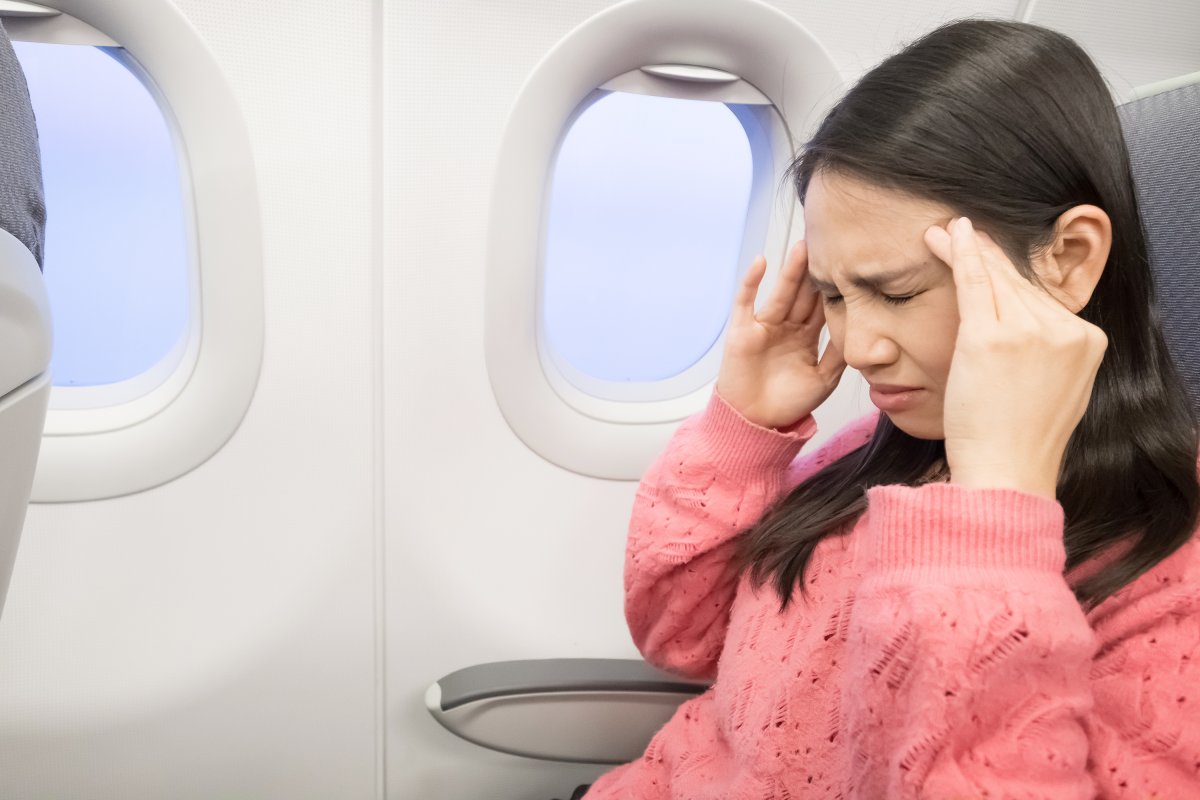It’s happened to a lot of us: you board your flight, you sit down, and your seatmate is coughing up a storm.

A study recently published in the Proceedings of the National Academy of Sciences found that on a four- or five-hour flight on a single-aisle plane, your risk of getting sick is higher if you’re sitting one row ahead, one row behind, or within two seats side-to-side of a flu-infected passenger.
“You see a study like this and it kind of reinforces most of the common sense that people already recognize,” said Dr. Gerald Evans, an infectious disease expert at Queen’s University.
“There is a risk if you travel and you’re on an international flight for several hours and there’s someone close by who is unwell, that you may come down with it.”
The study, which was partially sponsored by Boeing, also found that people outside that zone were at a much lower risk of catching the flu, according to their computer model. Moving around the cabin also didn’t pose much of a risk.
If you’re sitting next to someone who’s coughing, what should you do? There are a few ways to avoid catching a cold yourself.

Get weekly health news
1. Switch seats
You have no right to be assigned a new seat if you’re sitting next to a sick person, according to passenger rights activist Gabor Lukacs. But that doesn’t mean you can’t ask.
Air Canada encourages customers to approach flight attendants if they have concerns about their well-being. It’s possible that if there is a free seat somewhere, you might be able to take it. The further away you are from the person, the less likely you are to catch something.
Airlines can also refuse to transport people who are seriously ill.
2. Prevention
Did you get your flu shot? Ordinary preventative measures like vaccinations work on airplanes the same as anywhere else, and Evans recommends you take them.
3. Wash your hands
Some viruses, like rhinovirus which causes common colds, are more likely to be transmitted through touch, like an infected person passing you a cup of water from the flight attendant, said Evans. If you get the virus on your hands and then rub your eye, then you could catch it, he said.
So he recommends washing your hands or using an alcohol-based hand sanitizer.
4. Accept it
Evans, who often sees travellers in his practice, says that catching a respiratory infection on an airplane is fairly common – more common than the tropical diseases that people tend to worry about while travelling.
“It’s one of the dangers of airline travel.”
Chances are, you won’t be sitting next to someone who’s sick, he said, but it’s a risk you have to be prepared to take while travelling. “Recognize that it’s one of the things we accept in our busy world where we travel a lot and you’re going to come into contact with one of these things.”
Dr. Allison McGeer, a microbiologist at Mount Sinai Hospital says that you’re unlikely to get sick from just inhaling the air in the cabin since it’s exchanged so often. Also, “It is true that you are close to the other people in your row, but you aren’t directly facing them,” she said. So you might not be inhaling any virus-laden droplets that an infectious person is expelling when they sneeze or cough.
Even Vicki Herzberg, one of the study’s authors, says that her study is a “worst-case scenario,” in that “if you avert your face while that person is directly sneezing or coughing, if you observe good hand hygiene practices and if you don’t touch your face,” you can minimize your risk. The researchers also couldn’t find any evidence of respiratory viruses in the air or on hard surfaces like seatbelt buckles.
“I wasn’t really afraid to fly before and now I’m even less afraid,” she said.






Comments